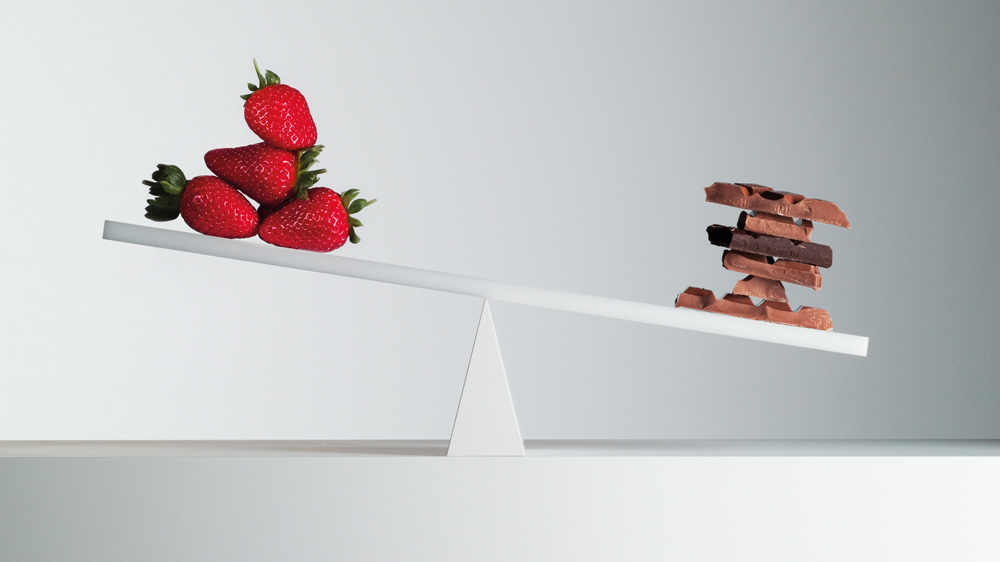6 Healthy Eating Tips To Help Improve Your Diet
Eating healthily is about more than just eating a load of broccoli. Here’s how to stack the diet odds in your favour

1. Understand the nutrition basics
“Rather than stick to a diet that just tells you exactly what to eat and when, you should understand why you’re eating what you’re eating,” says nutritionist Shona Wilkinson. “That means learning at least a few basics about which foods are high in protein or healthy fats, and which are bad for you.” Spend a few days tracking your current food intake with the MyFitnessPal app, and you’ll be able to see where you’re going wrong – and where it’s easiest to make big changes.
2. Tailor your diet to your life, not vice versa
“Any diet you decide to follow needs to fit your lifestyle,” says nutritionist Vicki Edgson. “Trying to make too many changes at once makes it less likely that you’ll stick to any of them.” If you’re planning to train first thing in the morning, for instance, a 16/8 fasting plan (fasting for 16 hours and eating only in an eight-hour window) where you don’t eat until lunch might not be best for you – but if you normally eat on the go anyway, it could be just what you need. Do your research, and choose your eating plan accordingly.
3. Upgrade your cooking ability
No need to leap straight in with a sous vide machine or even a spiraliser: a few basics that let you whip up easy meals in minutes are key. “Focus on the staples that will feed you and your loved ones every day,” says J Kenji López-Alt, culinary director of the Serious Eats site. “That could be learning how to properly boil or scramble eggs, or how to make a vinaigrette, so salads become a meal.” For entry-level vinaigrette, mix together a tablespoon each of white wine vinegar and olive oil, with a dash of dijon mustard. Apply straight away.
RECOMMENDED: Learn How To Cook Simple, Healthy Recipes With Chef Adam Grey
4. Rethink your eating space
Don’t rely on willpower. In a 2015 study, Americans who had cereal boxes sitting out on their kitchen counters weighed an average of 9kg more than those who didn’t, while those who kept a fruit bowl on the sideboard averaged 9kg less. There’s also evidence – from Cornell University’s Food and Brand Lab – that cluttered kitchens tend to cause overeating. Take an hour to restructure your eating environment, and avoid mindless snacking.
5. Invest in some good-quality kit
You don’t need much to improve your kitchen. If you’ve never done more than heat up a takeaway, start with the basics. “I would spend £50 on a Tojiro-Pro knife, £15 on a large cutting board, and £20 on a decent stainless steel pot big enough to cook soups, boil beans and blanch vegetables,” says López-Alt. “Don’t worry about making restaurant-grade meals.” You can add more as you improve your repertoire.
RECOMMENDED: The Only Four Things You Need To Start Cooking
Get the Coach Newsletter
Sign up for workout ideas, training advice, reviews of the latest gear and more.
6. Make a solid back-up plan
There will always be a time when things go wrong: your carefully packed lunch falls apart in your bag, your usual salad spot’s shut, your boss insists on a brainstorming session at the local wings ’n’ brews shed – and how you react at these moments is key to success. Make your plans ahead of time: “If I go to the pub, I will order soda and lime”, or “If I’m caught without a snack, I’ll grab a packet of almonds”. Don’t make decisions when you’re hungry.
From 2008 to 2018, Joel worked for Men's Fitness, which predated, and then shared a website with, Coach. Though he spent years running the hills of Bath, he’s since ditched his trainers for a succession of Converse high-tops, since they’re better suited to his love of pulling vans, lifting cars, and hefting logs in a succession of strongman competitions.

